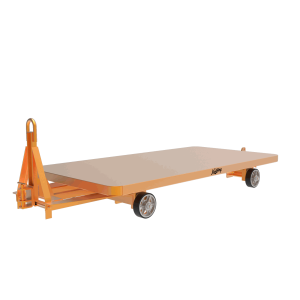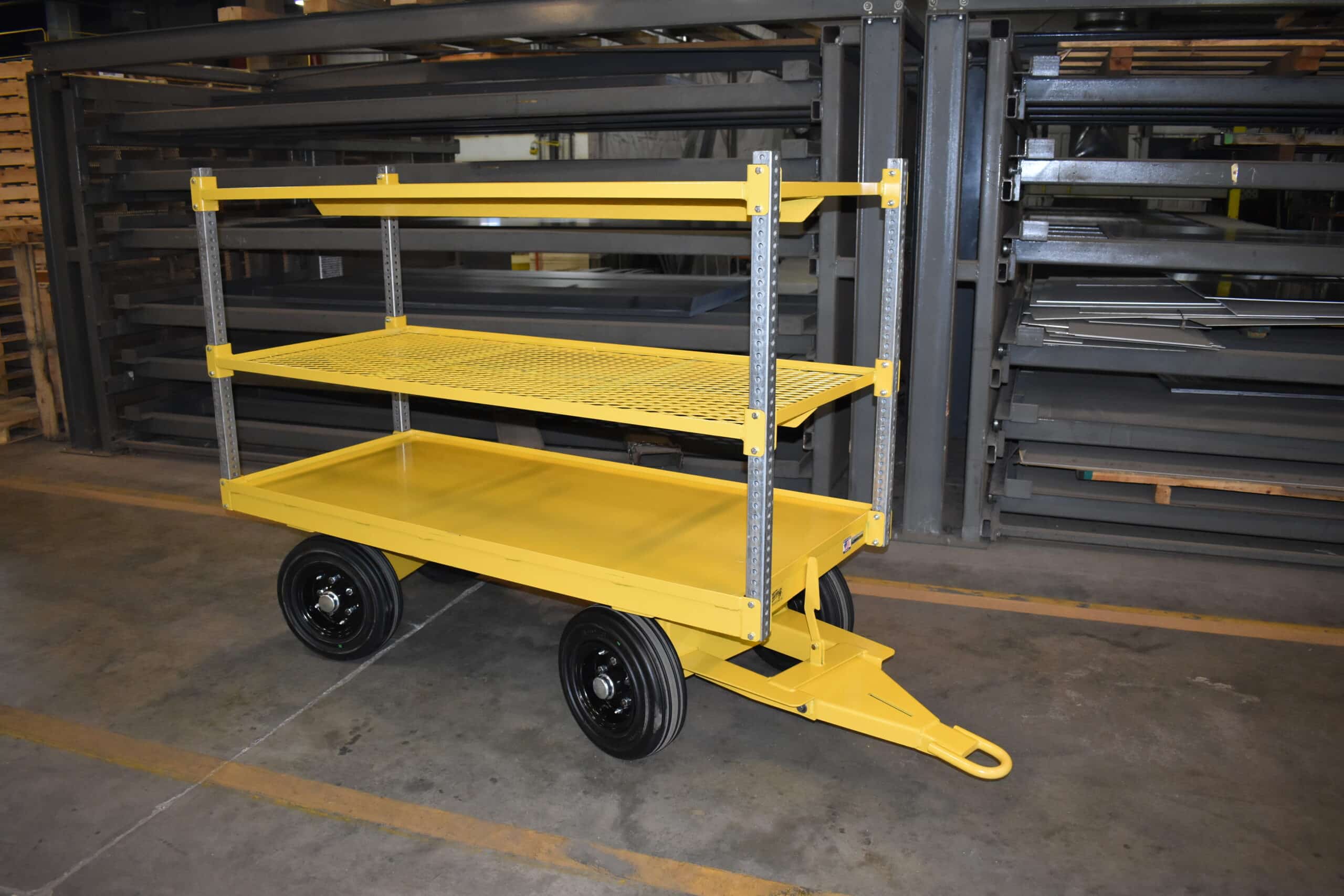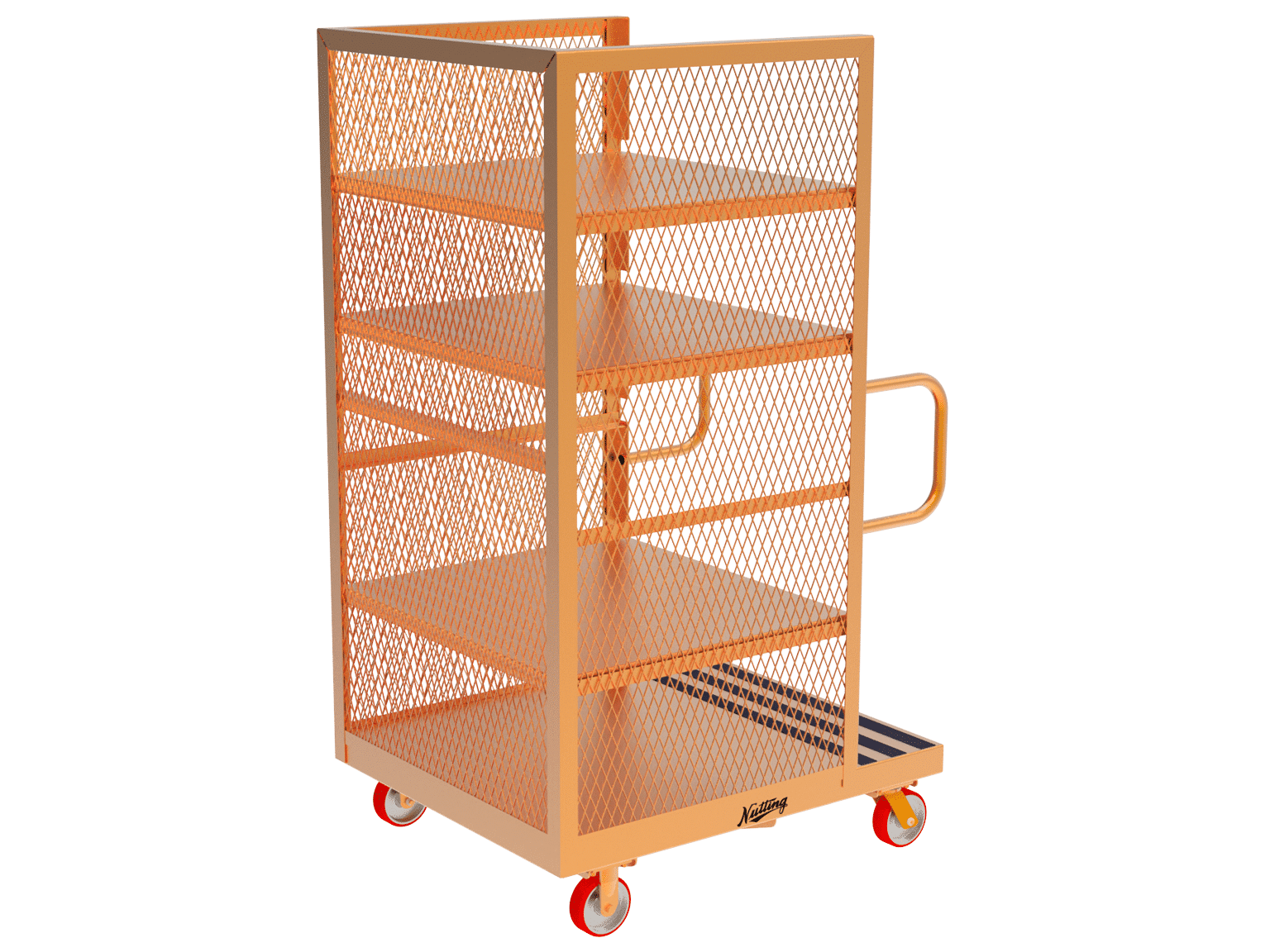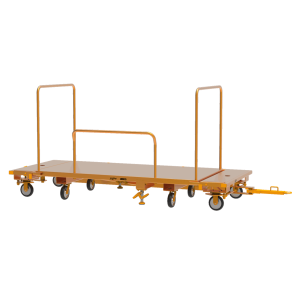Physical inventory counts are vital in e-Commerce; they ensure accuracy, optimize processes, and leverages technology for efficient inventory management.
An often overlooked key to success in the world of e-commerce, the physical inventory count can give you the most accurate picture of the actual count of your goods at any given time in your warehouse. Unlike a perpetual record, which continually updates inventory levels based on transactions and other data inputs, a physical count is a hands-on method that looks at the real-time number of items you have against your inventory records, ensuring the metrics on your balance sheet align with what’s physically present.
This might seem simple, but the counting process is not without its challenges. It can be time-consuming, and discrepancies can occur due to factors like human error, shrinkage, or inefficiencies in the counting method. This is where the implementation of carts and trailers makes a tangible difference. Keep reading to learn how these tools can help streamline the counting process.
Understanding Physical Inventory Count
As you navigate the world of inventory management, you’ll likely encounter different types of inventory counts that all play a role in helping you manage a steady flow of inventory in your warehouse. But let’s look at one specific type of count today: the physical inventory count.
A physical inventory count is a hands-on audit. It requires a meticulous tally of all inventory items, checking it against what’s documented in the inventory records. This process can be exhaustive, often requiring team members to count items SKU by SKU, to make sure that every product, from raw materials to finished goods, is accounted for. The prime objective of this method is to validate inventory accuracy.
Accurate inventory numbers are a vital component of inventory control. Without them, forecasting becomes a gamble, inventory adjustments turn erratic, and the balance sheet may not accurately reflect the company’s assets. Without an accurate count, businesses risk financial discrepancies and potential operational hiccups, ranging from stockouts to overstocking.
Yet, discrepancies can and do occur even with the best intentions and processes. There’s a variety of reasons why the numbers on your inventory management software might not match the actual count:
Shrinkage: This term refers to the loss of inventory due to factors like theft, damage, or administrative errors. Especially prevalent in retail stores, shrinkage can significantly skew inventory numbers.
Human Error: No system is foolproof, and errors can slip through, whether it’s a missed item during the counting process, a misread barcode, or simple data entry mistakes.
Inventory Tracking Issues: Inaccurate counts can sometimes stem from outdated or inefficient inventory tracking methods. Investing in real-time inventory management systems and regular inventory cycle counts is important.
Returns and Defects: Especially relevant in e-commerce and retail, returned or defective items, if not processed accurately, can result in discrepancies.
Misplacement: An item might be in the warehouse but not in its designated location, making it easy to miss during a count.
While discrepancies can be a cause for concern, understanding their roots and taking advantage of the right tools can improve your warehouse organization and significantly streamline the counting process.
Physical Count Vs. Perpetual Record
In inventory management, it’s important to ensure stock levels are correct. Two main ways to do this are by physically counting the stock and using a continuous record system. Even though they might seem very different, it’s key for businesses, especially in areas like online shopping and stores, to understand both methods if they want to work at their best.
The Perpetual Record System Pros and Con
The perpetual record system, often integrated with advanced inventory management software or ERP (Enterprise Resource Planning) systems, is a real-time tracking method. Every time an item is added or removed from the inventory – be it through purchases, sales, returns, or damages – the system updates automatically. Think of it as a ledger that’s constantly updated, providing an ever-present snapshot of inventory levels.
Pros:
Real-time Updates: Helpful for businesses like e-commerce, where stock levels can fluctuate rapidly.
Reduced Human Error: Automated tracking can minimize manual data entry errors.
Efficient Order Management: With an accurate, real-time view of stock levels, businesses can manage orders effectively, reducing lead times and enhancing customer satisfaction.
Cons:
System Glitches: Over-reliance on software can be problematic because errors can be overlooked and start to compound, especially if there are system crashes or software bugs.
Initial Setup Cost: Implementing a sophisticated ERP or inventory management system can be expensive.
The Physical Count in Focus
Contrary to the perpetual system, the physical count involves manually counting all inventory items at regular intervals, whether it’s monthly, quarterly, or annually. It’s the “ground truth,” providing a snapshot of what’s in the warehouse or retail store.
Pros:
Accuracy Benchmark: It offers a reality check, especially when discrepancies arise in the perpetual system.
Identification of Issues: Regular physical counts can highlight problems like shrinkage, theft, or misplacement.
Compliance and Reporting: For some businesses, especially those in the retail sector, annual physical inventory counts might be a requirement for financial reporting or regulatory compliance.
Cons:
Time-consuming: Physical counts, especially full inventory counting, can be labor-intensive and might disrupt regular business operations.
Increased Human Error: Manual counting might introduce errors, especially if not done meticulously.
Physical Challenges: In large warehouses or stores, items might be misplaced, labeled incorrectly, or even stored in hard-to-reach areas. This makes the counting process longer and can result in items being overlooked or counted inaccurately.
Why Businesses Might Need Both
While each method has its merits, a holistic approach to inventory management often involves a combination of both.
e-Commerce Dynamics: In the fast-paced world of online shopping, where inventory levels need to be updated in real-time, the perpetual system is indispensable. However, regular physical counts ensure that the system’s numbers align with actual stock.
Retail Store Challenges: While POS (Point Of Sale) systems in retail stores often integrate perpetual tracking, physical counts, especially during off-hours or store closures, can help pinpoint discrepancies, reducing issues like stockouts or overstocking.
Inventory Adjustments: Discrepancies are inevitable. A physical count offers a chance for businesses to make necessary inventory adjustments, aligning the perpetual records with the ground reality.
The Nutting Advantage: Custom Material Handling Carts
Custom material handling carts and trailers combine mobility, technology, and tailored design to make the inventory counting process as efficient as possible. Here are several examples of how they can help streamline the physical count of inventory in your warehouse:
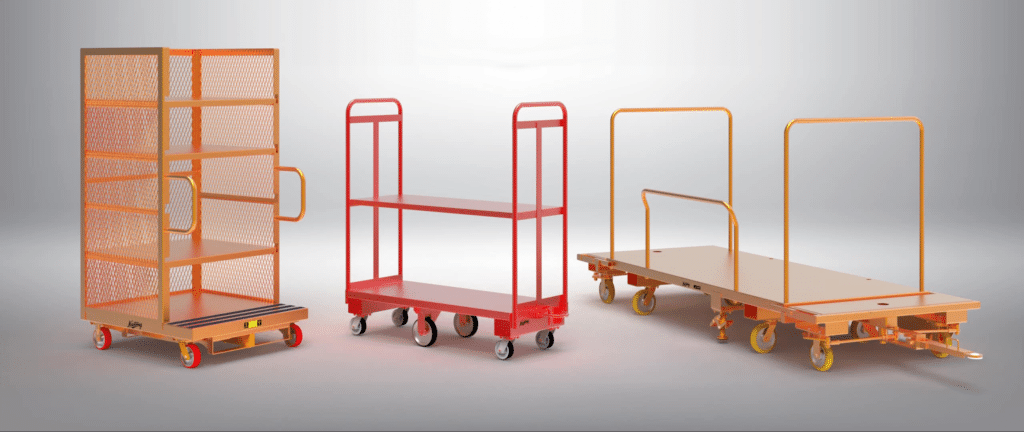
Organized Storage: Custom carts and trailers can be designed with specific compartments and shelving tailored to the type of inventory being managed. This organized setup makes it quicker and easier for employees to count items.
Mobility: With the added mobility of these carts and trailers, warehouses and storage spaces are granted versatility in their counting processes. They can either bring the count process directly to the inventory, reducing unnecessary handling, or easily transport the inventory to a dedicated counting area, eliminating the need to pack and unpack shelves.
Batch Counting: Customized carts can be designed to handle batch counts. For instance, if you know one shelf of a cart holds 50 items, and it’s full, you can quickly record 50 items without counting each one.
Integrated Technology: Modern carts and trailers can be equipped with technology like barcode scanners or RFID readers. This allows for real-time updates to the inventory management system as items are counted, making the process of counting your entire inventory more efficient and less prone to human error.
Safety and Damage Prevention: Properly designed carts and trailers can reduce the risk of damage to inventory items by securely holding them during the count process. This minimizes financial losses due to damaged goods.
Efficiency in Large Volumes: For large quantities of items, trailers can transport bulk items quickly to and from counting areas or even allow for counts directly within the trailer.
Versatility: Custom solutions mean that carts and trailers can be designed for specific inventory types, be it large machinery parts, small electronic components, or delicate items. This specificity streamlines the counting process for each kind of inventory.
Optimal Space Utilization: Customized designs ensure that every inch of the cart or trailer is used efficiently, maximizing the amount of inventory that can be transported or counted at one time.
Nutting’s custom carts are a game-changer for businesses that often tackle inventory counts. They’re precisely designed to cater to any product size or type, and their adaptability can accommodate unique warehouse layouts and specific counting needs. Interested in elevating your inventory management? Visit our LinkedIn page and explore how we’re setting new standards in the industry.



